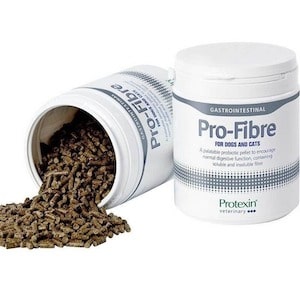Can you give your dog paracetamol to ease their pain? Find out the benefits, risks, and alternatives of this common human medicine for dogs.

Key Takeaways
- Paracetamol can be used for dogs, but only with a vet’s prescription and careful dosing.
- Paracetamol can reduce pain and inflammation in some conditions, but it can also cause serious side effects such as liver damage and anaemia.
- There are other safer and more effective painkillers for dogs, such as NSAIDs, gabapentin, and amantadine.
You Might Also Like:
Paracetamol for Dogs: Understanding Effects
Pain is an unpleasant feeling that can affect the quality of life. It can be caused by many factors such as injury, disease, surgery, or ageing. Managing pain is important for a dog’s overall health.
Paracetamol is a common medicine used by humans to relieve pain and fever. It is widely available without a prescription that’s why you will find it in almost all households. Paracetamol can be used for dogs, but with great caution and only when a vet prescribed it, whatever dose a vet prescribes.
Feeding paracetamol to your dog without consulting with the vet may be fatal, as even one tablet can be toxic to dogs. With saying that, there is a silver lining here. Here are some benefits of paracetamol for dogs[1]:

- Paracetamol can be effective in reducing pain and inflammation in some conditions like arthritis, soreness or post-operation pain.
- It can be used in combination with other painkillers, such as opioids and tramadol to enhance their effects.
- Dogs can take them orally or rectally, whatever is easy to handle.
Additionally, here are some limitations of paracetamol for dogs:
- “Dogs require fewer doses of paracetamol, large doses can be toxic to dogs if given for a long duration. Large doses can cause serious damage to the liver and red blood cells. This leads to symptoms such as vomiting, diarrhoea, jaundice, anaemia, or even death“, confirms experts at VCA Hospitals.
- Doses depend on their weight, health status, and other medication of the dog.
- It is not suited for all dogs, it should not be given to dogs with a history of liver disease, kidney disease, bleeding disorders, or allergies.

Risks and Side Effects
There are chances that paracetamol may cause dog poisoning, and damage their organs. There are many side effects and risks that pet parents should be aware of. Here are some points to consider before giving your dog paracetamol:
- The recommended dose is 10 to 15 mg per kg of body weight, given two or three times a day. This may vary as per the recommendation of the vet.
- It should be given with food to avoid stomach irritation and also to avoid strain on the kidneys and liver.
- Always consult the dog first, they can assess the dog’s condition and prescribe the right dose and duration of treatment.
- Monitor your dog after giving them paracetamol for any sign of distress.
- If your dog accidentally ingests a human painkiller, you should contact your vet instantly.

Alternative Options
There are some alternatives to paracetamol available that can be used for dogs in pain. Here are some of them[2]:
- Non-Steroidal Anti-Inflammatory Drugs: These medicines provide effective pain relief and reduce inflammation, especially for dogs. Common NSAIDs for dogs include carprofen, meloxicam, and deracoxib.
- Amantadine: This medicine blocks receptors that cause pain. A clinical trial found that using amantadine in addition to NSAIDs led to a significant improvement in activity levels.
- Gabapentin: This medicine is commonly recommended for chronic, neuropathic pain which leads to arthritis in dogs.
- Lyrica: Similar to gabapentin it works for neurotransmitters which benefit the bloodstream and improve their condition.

- Tramadol: It is routinely prescribed by vets to treat pain. Currently, it is not recommended for treating arthritis in dogs as the amount that is able to be absorbed and effective in the body diminishes greatly after just one week of regular doses.
It is important to note that you should never give your dog any medication without consulting a vet.
FAQs
Is There Any Human Paracetamol I Can Give to My Dog?
Aspirin—specifically buffered baby aspirin—can be safe when dosed carefully but is not as safe or effective as prescription medications. Ibuprofen (Advil, Motrin) is toxic to dogs and should never be used. Naproxen (Aleve) should be avoided because there’s a very narrow margin of safety and a high risk of side effects.
What to Do if My Vet Told Me to Give My Dog Paracetamol?
Paracetamol can be given to dogs, however, it requires a different dose. It can be toxic to your dog if you give them too much. A vet must always approve this. “Many vets prescribe paracetamol for dogs, as it can be an effective pain relief in some circumstances.
How Much Paracetamol Can I Give My Dog?
“Paracetamol is licensed in dogs as Pardale V for 5 days. The dose in Pardale V works out at 33mg of paracetamol for every kg of body weight, three times daily. The listed dose in most vet formularies is 10mg/kg twice to three times daily,” Nick explains.
Does Paracetamol Make Dogs Sleepy?
You may even notice fluid-like swelling develop around your dog’s face. Even if paracetamol doesn’t produce serious effects, you may still see your dog having an upset stomach. They will appear tired, and when you don’t consult your vet early, it may also produce signs of staggering, restlessness, and vomiting.
How Quickly Does Paracetamol Work on a Dog?
It tends to get to work quickly and wear off within a couple of hours and only rarely causes side effects in Humans. Paracetamol is sometimes prescribed for your dog however the dosages will reflect the weight of your best friend. Giving a 500mg tablet to a Miniature Poodle, for example, could cause ill effects.
Summary
In conclusion, using paracetamol for dogs require great consideration. While paracetamol is good for dogs doesn’t necessarily make it good for dogs too.
This article explored the effects, benefits, and limitations of paracetamol. As responsible pet parents consider giving them the right doses only, as anything more than that turns toxic for our dogs.
Combining the knowledge of vets with our love and care for dogs will keep them happy and healthy!
Reference:






